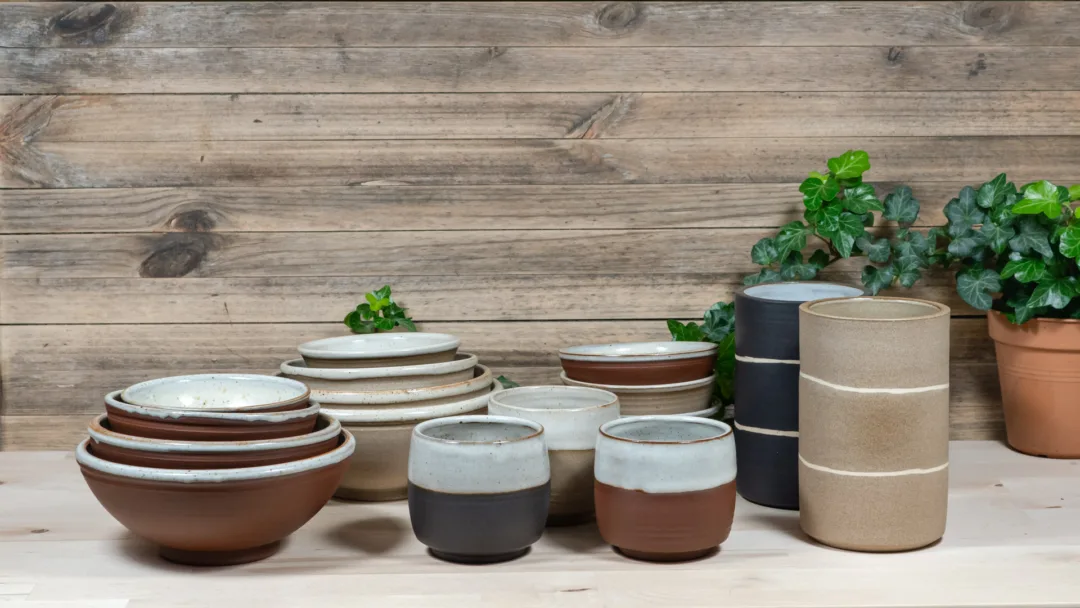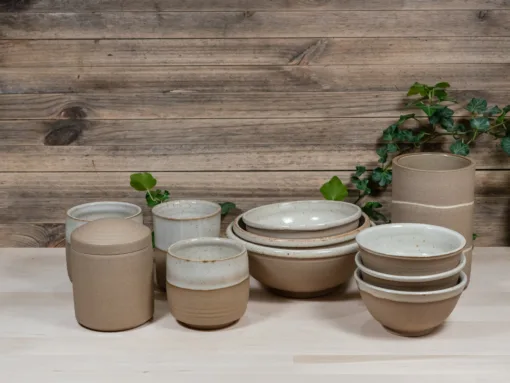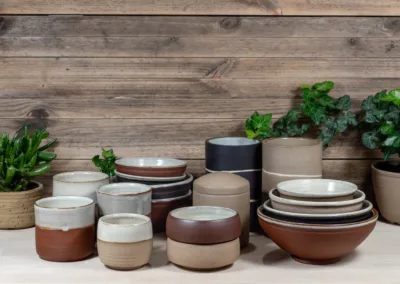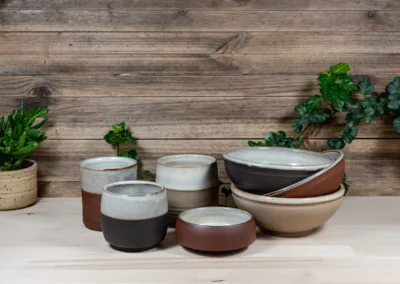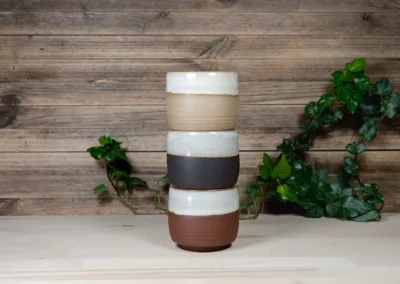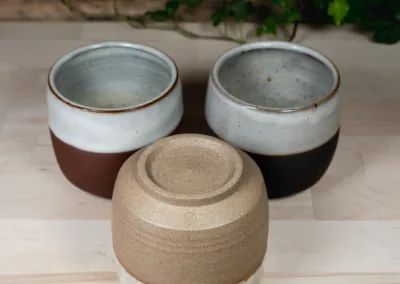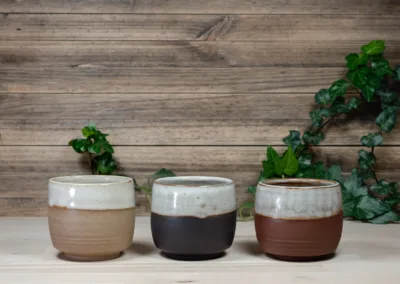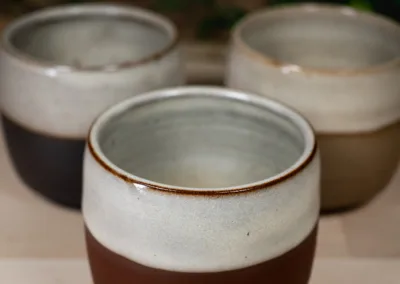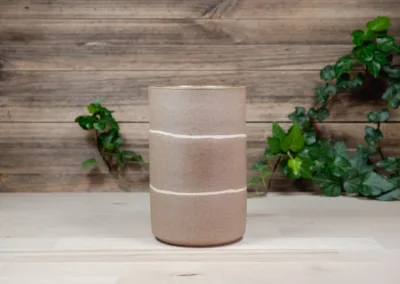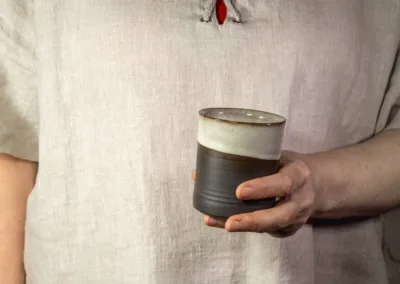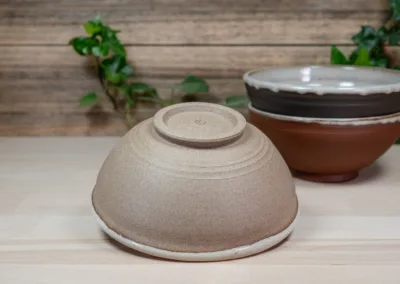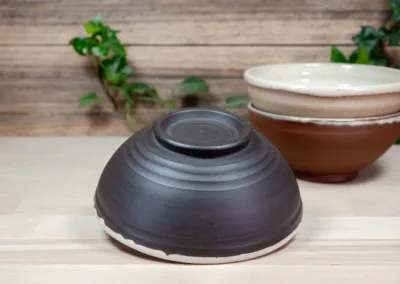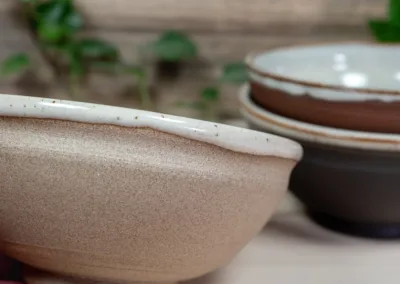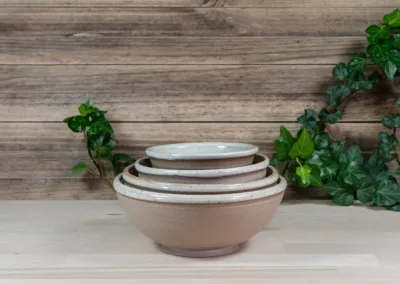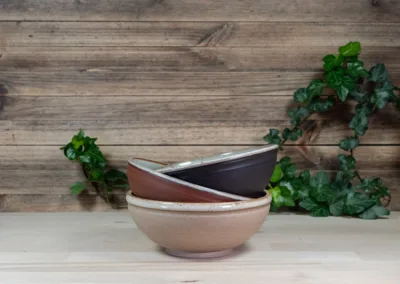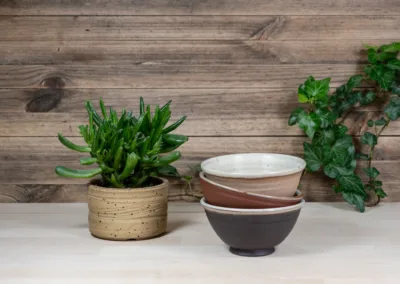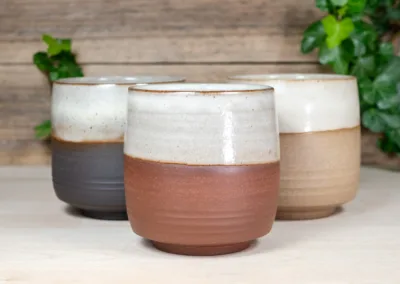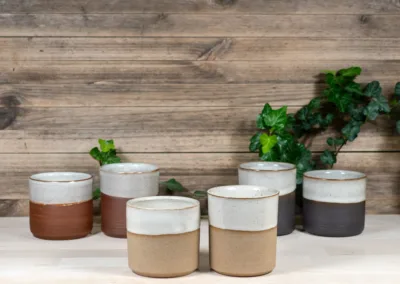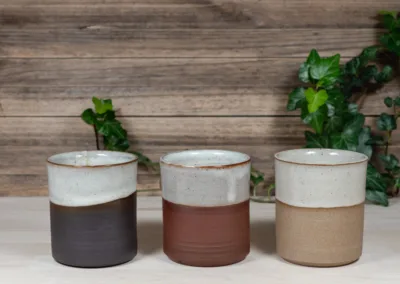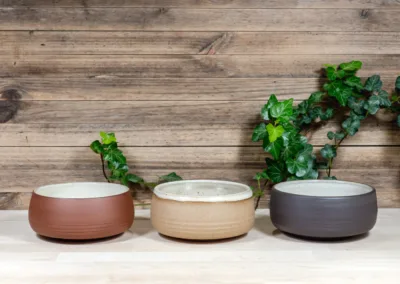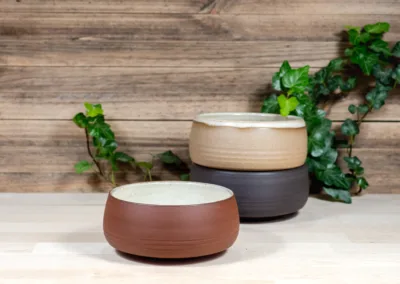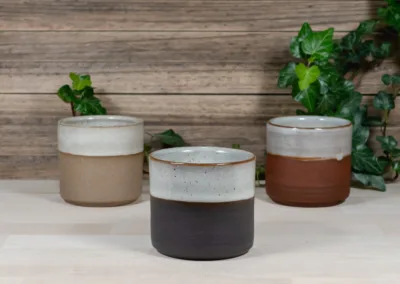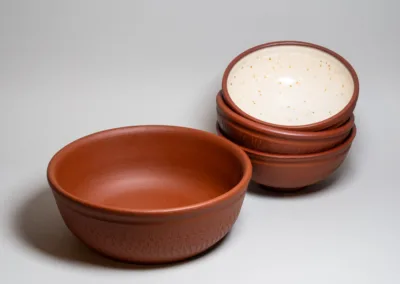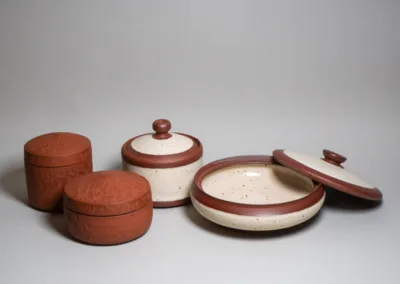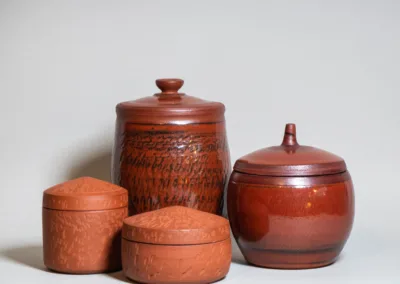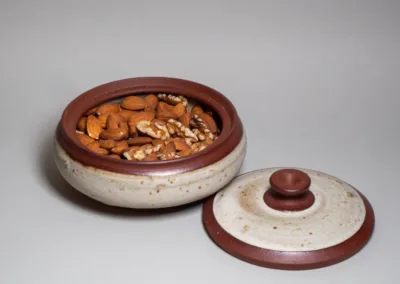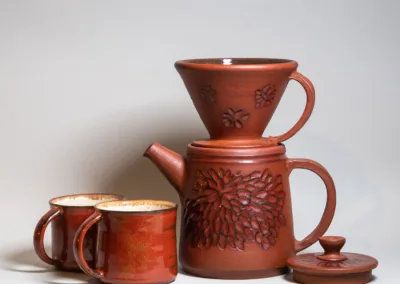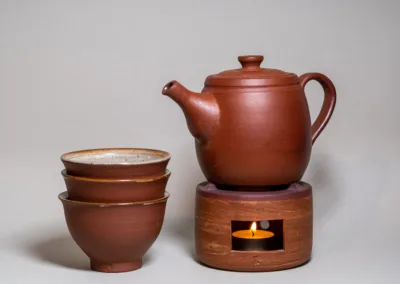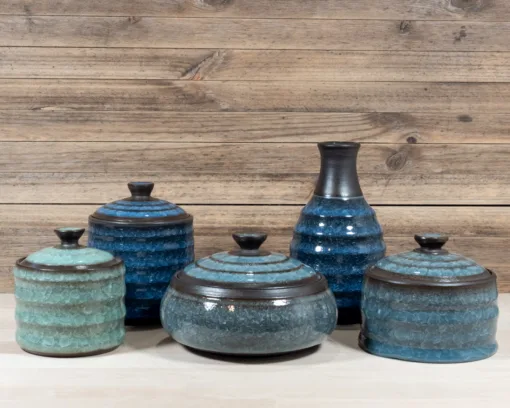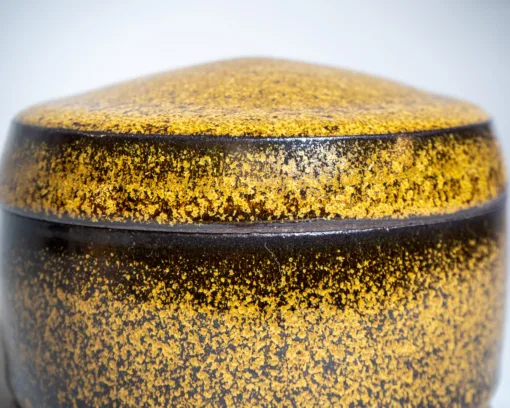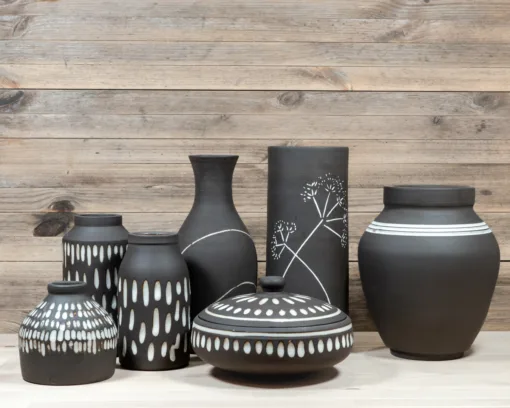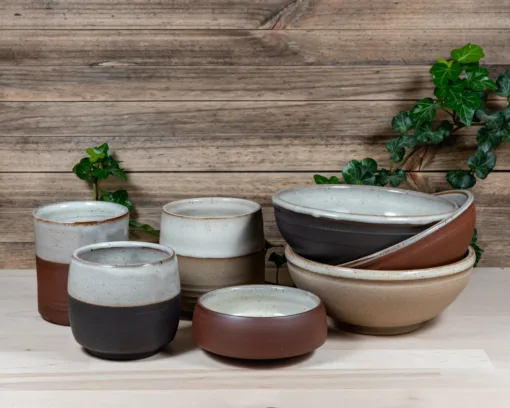Everyday
You come home, make tea, sit in the armchair, and catch your breath…
Here are cups, bowls and other simple dishes that give everyday life a calm, clean, modest, and rustic feel.
Everyday ware in three different colour stoneware
I like to play with different colored clay to achieve interesting variations. These dishes are carefully crafted and have simple forms. I use a light cream speckled glaze in a combination of three different clay.
These dishes are designed to support and improve every small meal in their modest beauty.
Sandstone
This is one of the latest clays I’ve started working with. Its light sandy color reminds me of a warm summer beach. Very nice clay! Forms well in the hand and has a very fine grog, which is not noticeable.
The result is light, smooth and silky!
Red-Brown
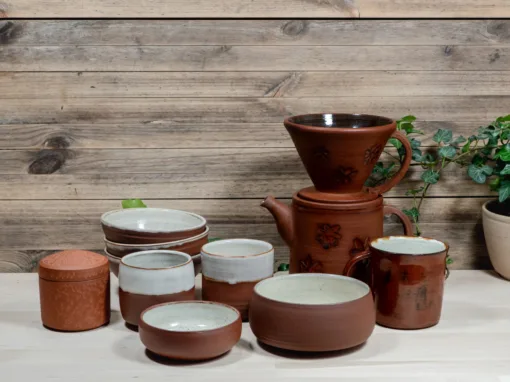
This clay has nice transformation games: fresh clay is beige-yellow, from pre-firing it is orange and in high firing it becomes dark reddish-brown. This is because of the iron in the clay, which does different things at different temperatures.
This clay gives the dishes an earthy, simple and warm feeling. Unpretentious!
Antracite
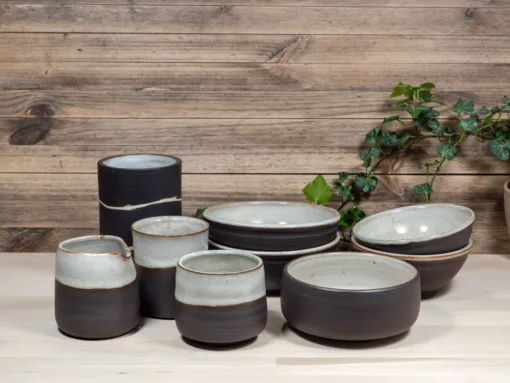
This dark grey stoneware is perfect for a minimalist lifestyle. I make it with the same clay as my Ice-Crackle collection. Either way, this dark clay makes for an exciting and beautiful combination.
It creates a contrast between the simple black and white of the pottery and the colorful and tasty food you put on it.
Different styles
Ice crackle
A glaze with many names: ice crackle, tortoise shell, snowflake and many more.
Made with thick layer of crackle glaze where the fractures develop the look of cracked ice. Hence also its name – Ice Crackle.
Stardust
When the odds become even during the firing process the iron rich glaze develops beautiful golden microcrystals. Sometimes covering the whole ware with golden hue and other times just few golden sparks like stars.
Glaze that’s originally called “Tea-Dust” and was mainly used in Imperial ware.
Everyday
You come home, make tea, sit in the armchair, and catch your breath...
Here are cups, bowls and other simple dishes that give everyday life a calm, clean, modest, and rustic feel.
Made from different colored stoneware where mainly inside of the ware is glazed so that the clay itself would be brought out.

